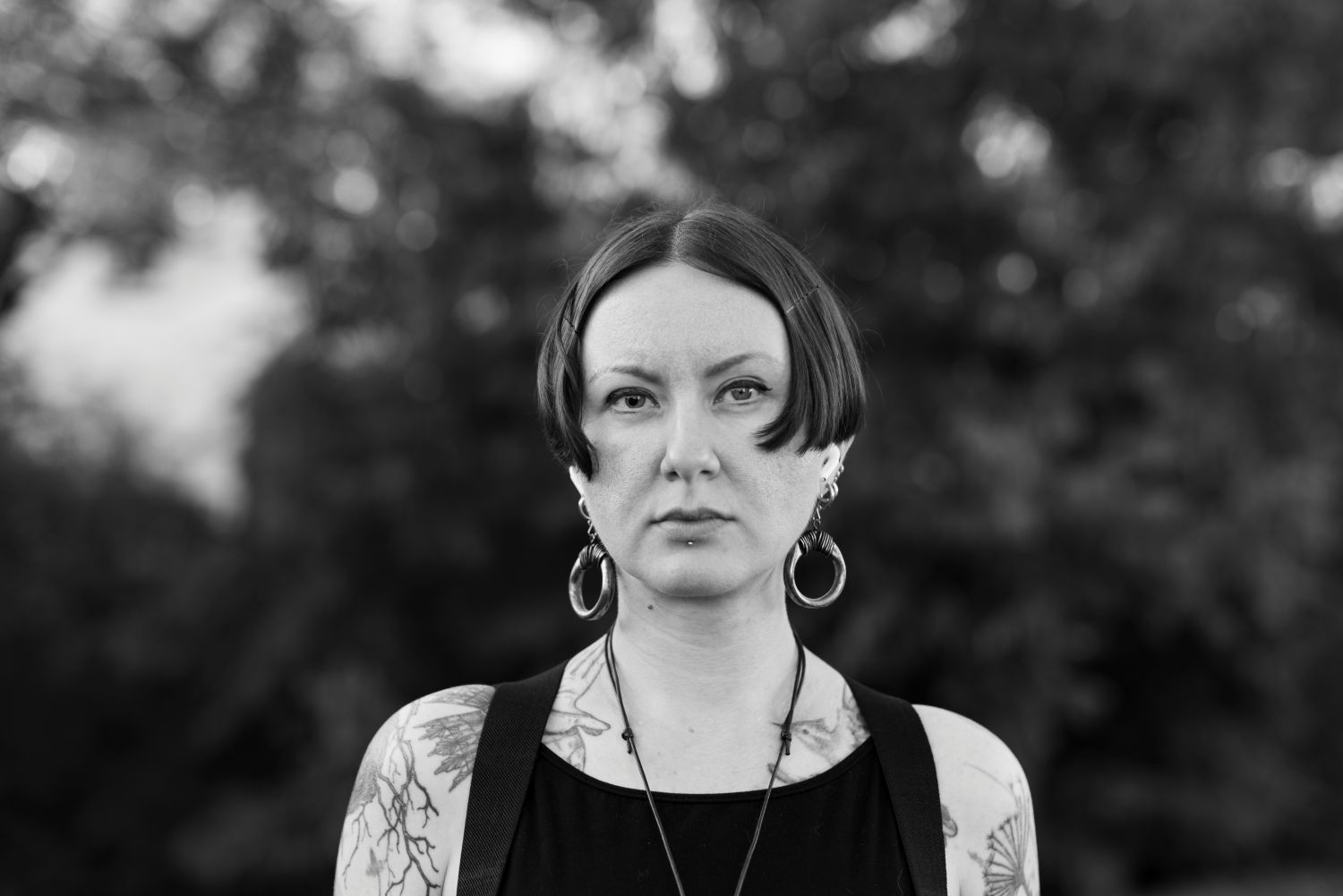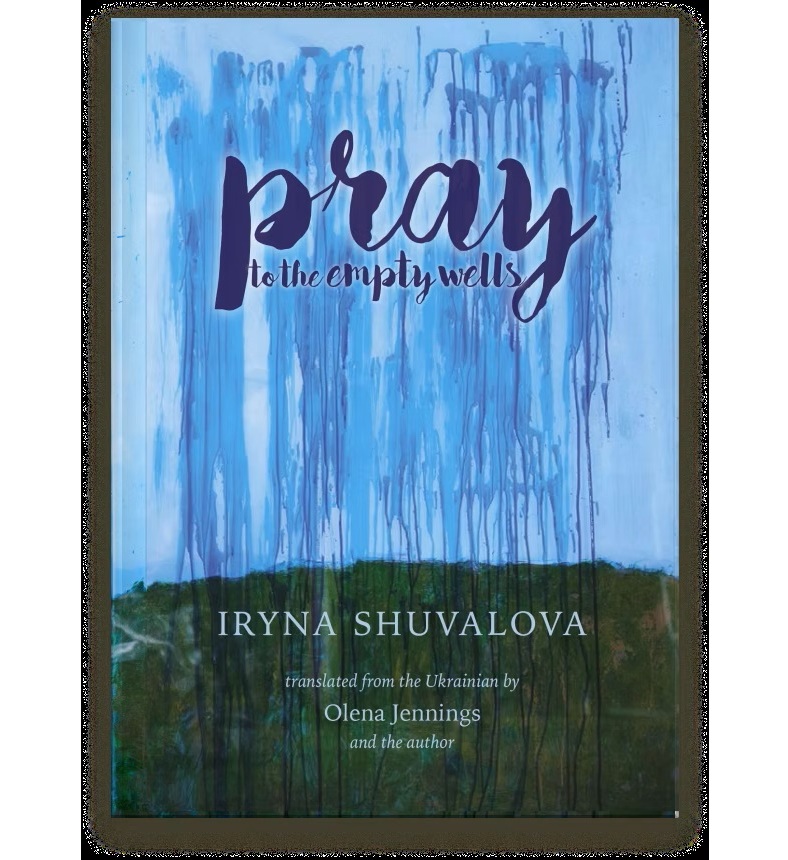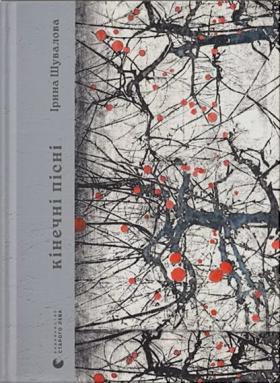‘Place is, in a sense, everything to me’
An interview with poet, translator, and scholar Iryna Shuvalova
interviewed by Alex Fleming
For as long as they have existed, metropolises have inspired artists and writers around the globe. Over its storied history London has played host to many writers, poets and thinkers, fuelling encounters that have left their mark on literature as well as on the city itself. To explore this literary heritage, University College London (UCL) has created a multi-faceted initiative, Lost and Found: A European Literary Map of London. Through its digital map, cross-continental exhibitions and public events, the project reveals a London and a Europe of the imagination.
To mark this special issue on city writing – conceived as an homage to the European Literary Map of London – Swedish Book Review spoke to three contemporary writers from across Europe, Nisrine Mbarki Ben Ayad (the Netherlands), Tone Schunnesson (Sweden) and Iryna Shuvalova (Ukraine), for all of whom place plays an important part in their work. In this series of interviews, the writers discuss how they respond to the complex fabric of urban modernity, their relationships to London as a city, and the intersections of their various literary practices.

SBR: How important is place to you in your writing? What elements of cities do you personally respond to most?
Iryna Shuvalova: Place is at the very core of what I do. I often say that when I’m not writing about places explicitly I still reflect on many things through the prism of place. For example, my perception of time is quite spatial: I think of different times in my life as places that I can visit in my memory.
I would also say that I often think of poems as places, and liking the same poem as someone else is very much akin to visiting a place that we both share some affinity for. So place is, in a sense, everything to me. I have a rather strong interest in Chinese Taoist philosophy, and from the Taoist perspective you can almost think of a human being as a particular place, a little knot in the fabric of the universe. So in that sense I almost feel that even when I’m thinking about myself, to some extent I’m applying that spatial perspective, locating myself among other things.
In terms of cities, I was just having a conversation with a friend about how smell connects us to places, and I almost feel that poetry is this unique tool that you can use to tie together all these connections, all these bridges you build via your senses between yourself and the spaces around you. In poetry you can capture the smells, the sounds, the visual aspect of a place. It’s almost like an ideal map: it gives you a way to structure all the information your senses give you about the place you’re in, and also about your place in everything.
How do you go about recreating the fluidity and texture of an urban landscape in your work?
From a very practical perspective, when I’m trying to tackle this question of how I would put this complexity to paper (or to screen? My Notes app?) I think I always look for ‘hooks’ in a sense. Not so much as a stylistic device; I think it’s almost like palpation, a diagnostic tool in ancient medicine, where you knead the body in a tactile way. I think for me the starting point of a poem is almost like mental palpation: I’m feeling through the connective tissue between myself and the city, in this case, looking for particularly sensitive spots, for knots in that tissue. Anything that makes me pause and feel something, or reflect.
Yesterday my friend and I were walking through the old parts of Suzhou city, where some buildings date back to the Ming dynasty, so the sixteenth century or even older. We passed one building which, based on the shape of the entrance, was several centuries old, but it had this very modern, very practical, bland metal door instead of the traditional wooden gate, and the front of the building was also covered in very simple, generic ceramic tiles – something that you would find in a public bathroom, for example. It’s things like that – that on the one hand might be perceived as an incongruity, but on the other hand speak to the nature of time and how it often gets layered in very messy ways – that I pick up on. The fabric of the city can also be messy, and I think I love that messiness.
If I feel a little ‘knot’ like that, I’m definitely likely to pause, and it’s definitely likely to go into a poem later. Though I still haven’t figured out how to write about those fantastic tiles!
In poetry you can capture the smells, the sounds, the visual aspect of a place. It’s almost like an ideal map: it gives you a way to structure all the information your senses give you about the place you’re in, and also about your place in everything.
The theme of this issue was inspired by the European Literary Map of London. What is your relationship to London as a city? Are there any particular works of literature or art that have shaped your vision of the city?
That’s a fun one! I lived in the UK for three years while writing my PhD thesis, but despite living very close to London (in Cambridge), I actually didn’t travel there all that much. I feel like London is a place of constant slight discomfort, and that can make it a little irritating, but also a fantastic place to write about. You’re more attuned to it because it slightly rubs you the wrong way. So much great writing about London has been complaining about London at the same time as expressing positive emotions about the city.
As for specific works, it's so hard to choose, because so much has been written about London. As a kid I probably first connected with London through Sherlock Holmes – I’m not at all unique in that – but I think I’ll say another work that’s not unique either: J. M. Barrie’s Peter Pan novels. Of course I first got to know these stories as children’s writing, but I think it’s one of those children’s books that we appreciate in a whole different way when we grow up. I never particularly liked Peter and Wendy, but I’ve always been a huge fan of Peter Pan in Kensington Gardens. Actually, in some places online, I still use @neverbird as my handle, which comes directly from there. I have this little ritual that whenever I go back to London I visit to the Peter Pan statue in Kensington Gardens. For me I think it’s almost a pilgrimage at this point. In a sense it’s this idea of going back to my inner child, but I also see the statue almost as a monument to impossibility, and to longing. We all probably long to stop time and stay in a certain phase of our lives for longer or forever, even though forever is a very scary word. With the statue it’s almost like this impossibility is materialised, cast there in bronze in the figure of this forever-boy. Going there isn’t just paying a visit to my favourite books. It’s going to this place of the impossible, where the impossible is slightly more possible than anywhere else in the world, if that makes sense.
I also feel I really connect with gardens in general as this strange in-between place, a grey area between nature and culture. When I was a kid, my grandparents had a cottage outside of their village where they would live in the warmer times of the year, and where I spent every summer until I reached a certain age. Their garden, which was a very big, overgrown orchard, always seemed to me like a place where anything was possible, a kind of transitional space. Just stepping into the garden at night felt like entering a completely different realm; you hadn’t quite crossed to the ‘other side’, but you were so close. I’m also thinking of the image of hedgerows for example, and how they were associated with a type of witchcraft. There’s a term, ‘hedge-riding’, which means walking the line between two worlds, with the hedge serving as a material metaphor for that line. And I think gardens are a bit like that, so I do perceive most cities through their parks and gardens and green spaces, places where the fabric of the city is thinning, but where it’s the city still. I guess that’s also part of the reason why I connect so closely with Kensington Gardens, but also with London’s other parks. I think every time I go to London I just end up in one park or another.

I’ve been becoming more conscious of my translations – especially because I translate poetry – being an original writing in some sense. Of my presence as a writer in my translations, and of my presence as a translator of sorts in my writing.
Your work and background traverse many different locations. How do you feel these different experiences of place have contributed to your craft and identity as a poet?
They definitely reshaped my identity as a person in a major way. I sometimes say that, as a working-class kid in Ukraine without many prospects of travelling besides maybe in my imagination, when I imagined what it would feel like to travel, I think I always used to think of it as an accumulation of sorts. We travel, we go to new places, we meet new people, see new things, acquire new experiences, cultural exposure, etc. But there’s a difference between travelling and living. I’ve lived in many places: Ukraine, the US, the UK, Norway and China, and I have a strong connection with Greece as well. I feel that what I’ve realised from living in different places is that in a sense every place that you attach yourself to also ends up stripping a layer from you when you leave it. For me, I feel like a lot of my ‘home culture’ – my ideas about myself and the people around me, and a lot of my habits, have been stripped away and left behind. Also, a lot of my memories have been dispersed between places and spread thinner. That does many things to you, but it also crystallises the core of yourself. I sometimes describe it as peeling an onion, only with an onion you can peel until there’s nothing left, whereas with yourself – or at least I hope that’s the case – at some point you reach a little core of yourself beneath which not much is peelable. It’s who you actually are underneath all the layers of culture and place that have shaped you.
This experience has simultaneously made me long for home more, all while feeling that home is impossible, or at least the kind of ‘home’ that you envision if you haven’t made different homes in different consecutive places. I think I’m at a stage where I’ve begun to think that the default ‘home’ – the one you have before you ever travel somewhere, replant yourself in new soil – might no longer be a possibility for me. Again, it’s that bronze boy on a pedestal who never grew up, yet is only achievable as a figure made of bronze. Home is kind of possible, but only as an idea that will live in my poetry. Maybe my poetry is the truest home I will be able to construct for myself.
Among many other things, you also translate. How does translation inform your writing practice (or not)?
Of course it does. I would be curious to hear from other poet-translators whether this is what happens to them, but for me it’s almost like I’ve started to perceive writing as a kind of translation process. At the same time, I’ve been becoming more conscious of my translations – especially because I translate poetry – being an original writing in some sense. Of my presence as a writer in my translations, and of my presence as a translator of sorts in my writing.
In writing poetry I translate not just my experiences into words. It’s more than that. I sometimes say that poetry is a device that can stop time – a time machine of sorts. I already mentioned how I view poems as places, and the first time I thought that was when I was reading Ruan Ji, a third-century Chinese poet. I was thinking of all the people who must have loved his poems over the centuries, and I thought about how these poems that different people have come to and read and loved are like a meeting place. Through these poems you connect with other people who came before you, as well as with the poet (in this case) himself. It’s a meeting place that preserves the imprint of a person and a time that are long gone, and yet the moment they capture survives. And that’s incredible. It’s like one of those tiny insects caught in amber. And for me that’s magic, that’s time becoming place. So in that sense reading poetry and writing poetry are both time travel, and my own practice is making the impossible possible, capturing things that would otherwise disappear.
Of course, other mediums of art also have this very special relationship with time. Poetry is not unlike photography in this regard, and I’m reminded in particular of Roland Barthes’ beautiful Camera Lucida, his extended essay on photography, where he says that if we really think about the photos we see, they always carry with them a slight trace of sadness, because they always capture a moment that has gone and won’t return anymore, a remembrance of things past. I feel like poetry works the same way. Maybe I share Barthes’ melancholy frame of mind, but I think there’s always a tinge of sadness about poetry, but at the same time a sense of awe, the ability to connect with other people’s unique experiences. It becomes a possibility, a place that you can visit. I think of it almost as a friend taking you by the hand and saying ‘let me show you my secret place’. In it there is this immense sense of trust and human connection.
When translating our experiences through poetry, we always need to palpate and then tiptoe along this line. I was speaking to another Ukrainian poet, Iya Kiva, about The King of Elfland’s Daughter by Lord Dunsany, considered to be one of the earliest works of proto fantasy. I can’t say it was my favourite book in the world, but in it there is a land of fairies, and a land of humans. A human needs to get into the land of fairies, but they are under a curse, which means that whenever they approach the border, which is twilight, the border draws further away from them. I almost feel like in poetry the nature of that border is very fluid, and the things that we are trying to say escape us so easily. So toeing that line is very tricky, and it’s really no different from what we do as translators of poetry. There we also need to toe this line between inhabiting someone else’s voice, and living in our own voice, and that’s a very tricky thing, so we must do it with care.

Iryna Shuvalova
Iryna Shuvalova is a poet, translator, and scholar from Ukraine. As of late 2025, Shuvalova has authored five books of poetry in Ukrainian. She has won most of Ukraine’s major awards for poetry, including first prize for poetry in the Smoloskyp Literary Competition, the Oles Honchar Prize, the Blahovist Prize, and others. Her writing has been widely anthologised and featured in periodicals in Ukraine and abroad, including Literary Hub, Modern Poetry in Translation, Words Without Borders, and many others. Her poems have been translated into thirty-two languages. Originally from Kyiv, Ukraine, in the past decade she has been living between Ukraine and other countries, including Greece, the UK, the US, Norway and China. Currently residing in China, an important part of her work has been building bridges between the Sinophone world and Ukraine.
